Autumn is a spectacular time of year when the trees put on a stunning show of colour. As the days shorten and temperatures drop, their leaves change from summer greens to the vibrant oranges, yellows, and browns we all know and love. Whether you’re walking through ancient woodland or exploring your local park, there’s a whole world of colour above and beneath your feet. Here are some of the trees to look out for this season!
What to see in November – Autumn Leaves
© Zsuzsanna Bird
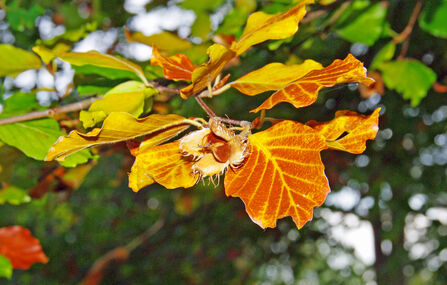
©Gillian Day
Common Beech
An iconic tree of southern England, the Common Beech stands tall and proud in woodlands and parks. In autumn, its leaves turn a beautiful golden-brown, carpeting the woodland floor in a crunchy layer that glows in the low light. Beneath its branches, you might spot its small triangular nuts, known as mast, which provide an important food source for birds and mammals as winter approaches.
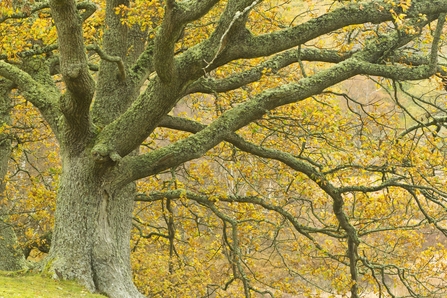
© Mark Hamblin 2020VISION
English Oak
Few trees are more symbolic of the British landscape than the mighty English Oak. Its broad crown and deeply fissured bark make it instantly recognisable. In autumn, its leaves turn a warm brown and cling to the branches longer than most, making it one of the last trees to lose them. Keep an eye out for acorns - these little treasures are a vital food source for wildlife like Jays and Squirrels, who often store them away to see them through the colder months.
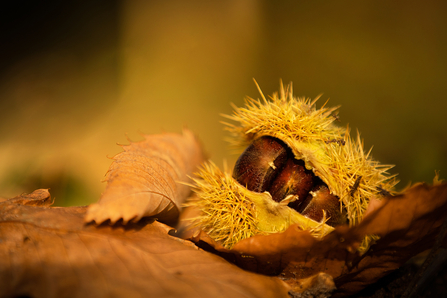
Jon Hawkins, Surrey Hills Photography
Sweet Chestnut
The Sweet Chestnut brings both colour and flavour to the autumn woods. Its long, serrated leaves turn a rich golden yellow before they fall, and beneath the canopy you’ll find its spiky green cases, each holding the shiny brown chestnuts we associate with winter. Originally introduced to Britain by the Romans, Sweet Chestnuts remain a seasonal favourite for people and wildlife alike.
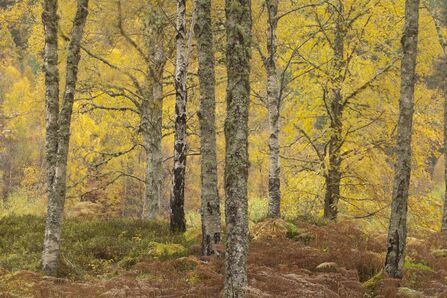
©Mark Hamblin/2020VISION
Silver Birch
Delicate and graceful, the Silver Birch stands out for its distinctive white bark, which peels away in papery layers. In autumn, its small, triangular leaves turn a brilliant yellow, creating a bright contrast against its silvery trunk. Found in heathlands, moorlands and sandy soils, birch trees bring a touch of light to even the dullest autumn day.
©Philip Precey
Sycamore
A familiar sight in woodlands, parks and along roadsides, the Sycamore is known for its large, lobed leaves and “helicopter” seeds that twirl through the air in autumn. Its leaves turn orange and red before falling, creating a fiery display. Although introduced to the UK centuries ago, Sycamores are now a part of our landscape - providing food and shelter for insects and birds alike.
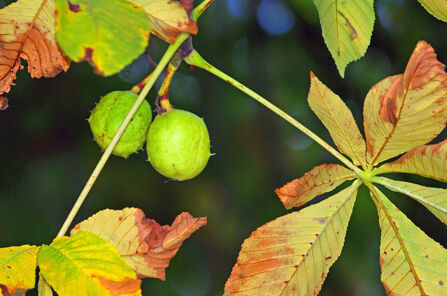
© Gillian Day
Horse Chestnut
Beloved by children and adults alike, the Horse Chestnut is the tree behind the classic autumn game of conkers. Its large, hand-shaped leaves turn a mix of yellow and orange-brown, and its shiny brown seeds appear in spiny green cases. Found in parks, roadsides and large gardens, the horse chestnut is one of the true heralds of autumn.
So why not wrap up warm, head to your local woodland or park, and soak up the sights, sounds and colours of the season? Whether you’re walking the dog, meeting friends, or exploring one of our nature reserves, there’s always something new to notice. Don’t forget to take our Autumn Leaf Spotter Sheet with you!

